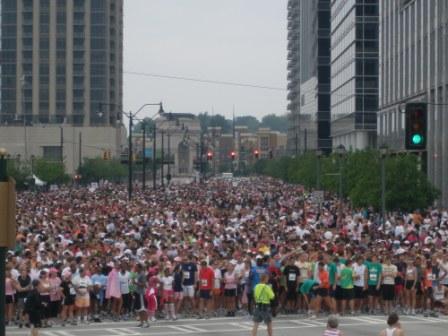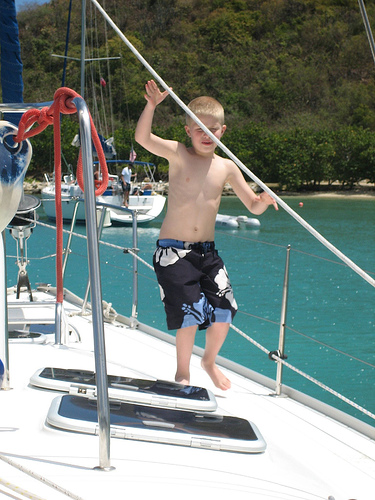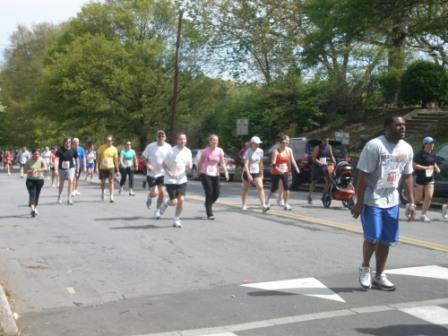I know, you want running to be free, creative, and without limits; but I’m sorry, everything needs to be categorized. Below are some running categories with explanations. I know I left out a couple of running categories like “cross-country” or maybe “ultra” running but I write this blog everyday, I need to save some material for later. Can I get a doggy bag for cross-country and ultra running? Thanks…and some extra bread please.
Trail Running: The grand daddy of them all. Well, at least the most universal of all of the running categories. The only criteria for a run to be considered trail running is that it is not on a paved surface. Trail running can be done on grass, rock, sand, gravel, snow, or water. Whatever you want, just preferably no pavement. It can be done on singletrack, double-track, or in a field. Distances can vary from a 5K to 100 miles. Typically trail runs are distance runs. Sprinting on gravel isn’t really that fun. The main focus on trail running is getting back to nature and leaving the paved jungle you live and run in. Trail Running is beautiful and needs to be celebrated. Join me in celebrating trail running on Aug 22, National Trail Running Day.
Mountain Running: Categorized by its steep ascents or descents; like on a mountain. While many trail runs contain steep ascents and descents, mountain running can be done on paved surfaces as well as trails. The official authority on Mountain Running is the World Mountain Running Association. From their website they say that mountain running was developed from a need for humans to continue what they have been made to do, run over steep terrain to hunt and gather. There it is, Running is the oldest profession. Sorry real estate geeks.
Fell Running: Fell running begun in the 19th century and took place in community games. The sport grew with top athletes becoming famous for their Fell Running prowess. The sport eventually attracted bookmakers and gambling. I wonder if you can bet on running races in Las Vegas? I’m sure you can but I’ve never seen it. The official organization is the fell runners association. The difference between Fell Running and the other running categories is that it overlaps with orienteering. Runners are given checkpoints to run to but the course they take is up to them unlike a trail or mountain race. Fell Running race courses have categories, probably because there is no specific “course map,” in distance: Long-more than 12 miles, Medium-6-11 miles, and Short-less than 6 miles. I’m not sure what category a distance of 11.5 miles would fall in. They also have categories for the ascents, Category A-at least 250 ft. with no more than 20% of the route on the road, Category B-at least 125 ft. with no more than 30% on the road, and Category C-at least 100 ft. with no more than 40% on the road. See, it’s cool to categorize your running!
So next time you go for a trail run, mountain run, or fell run make sure you accuratley call it what it is. Or just say you’re going for a run. Even a caveman can understand that.









